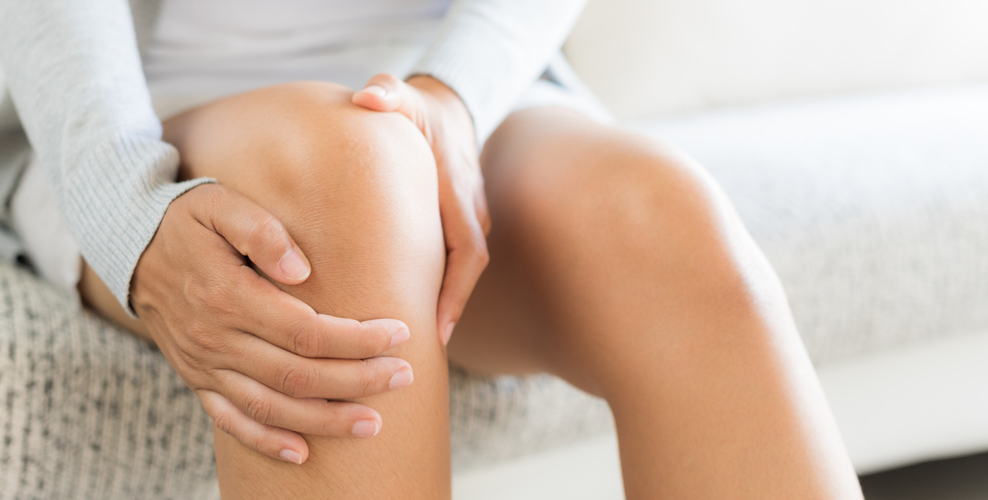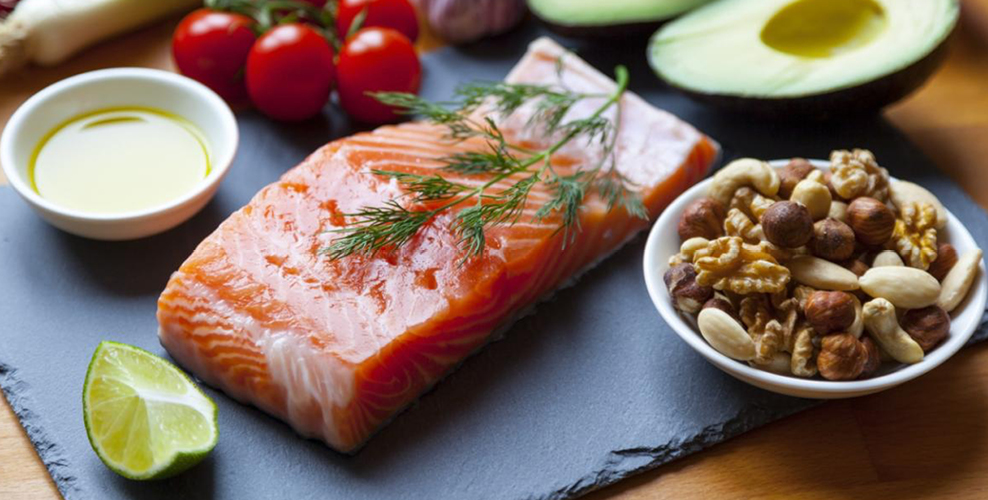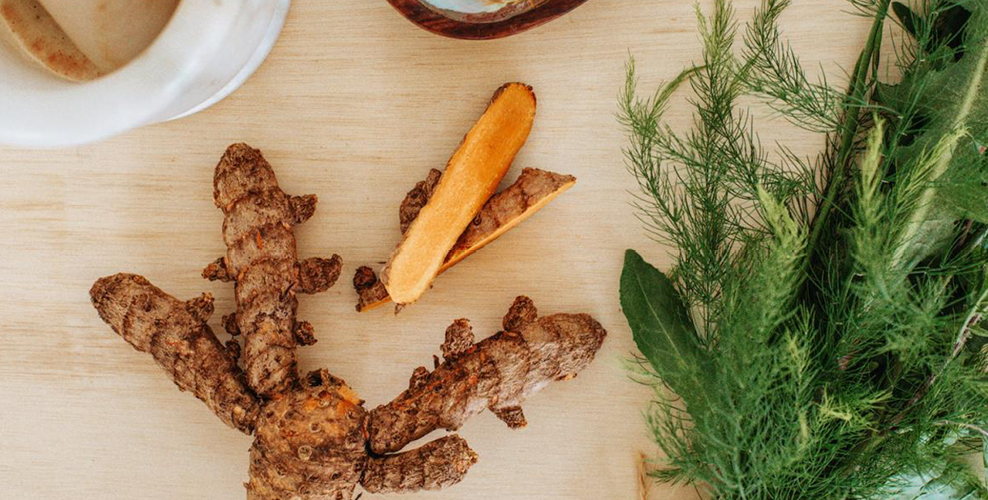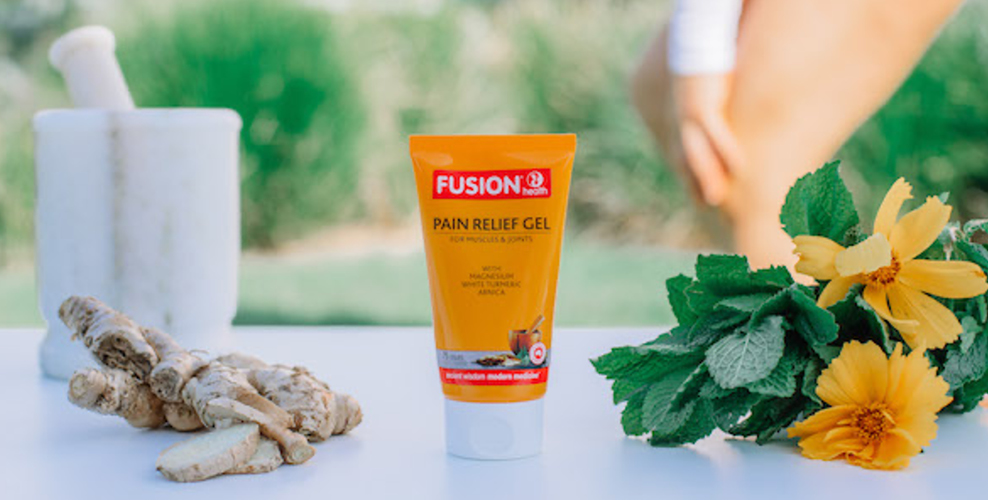Joints feeling a bit sore? Here’s how to take care of them

Mild joint pain is often associated with inflammation in the affected area and/or with deterioration of the cartilage that lines the joints. The more changes you can make to your lifestyle to reduce or relieve these two issues the happier your joints will be - so let's get started!
Watch your weight
Being overweight contributes to both cartilage damage (due to increased wear and tear on your joints) and generalised inflammation throughout the body.1
That means that if you're carrying a few too many kilos, starting to slim down may be one of the most helpful changes you can make to relieve your joint pain.
The good news is that for people who are overweight or obese, losing just 10% of your body weight may be enough to start relieving your mild joint pain, decreasing inflammation, reducing the load on your knees and improving your quality of life.2
And losing a greater percentage of your body weight may lead to better outcomes again.2
Try a Mediterranean-style diet
The Mediterranean way of eating that's formed the backbone of Greek, Italian and Spanish cuisine for generations is well-known for its many health-promoting benefits.
If you're experiencing mild joint pain that's due to mild osteoarthritis, it could be worth switching to this way of eating. In a study involving osteoarthritis sufferers, those who strictly adhered to a Mediterranean-style diet reported improvements in their pain, joint stiffness and overall quality of life.3

Get fishy!
Along with the abundance of antioxidant-rich fresh fruit and veggies that it provides, a Mediterranean-style diet is characterised by more fish than is typically found in a Western diet.
Oily fish are one of the most important dietary sources of omega-3 fatty acids, which have anti-inflammatory properties. When mild osteoarthritis is present, they can help relieve symptoms like mild joint pain and promote healthy joint function.
For that reason, aim to include fish in your diet at least twice a week, ideally choosing those like salmon, tuna, sardines or mackerel, which are high in omega-3s - or otherwise, consider taking a fish oil supplement.
Other inflammation-fighting foods4
If your current way of eating contains large quantities of foods like red meat, processed foods, alcohol or omega-6 fatty acids from refined vegetable oils, be aware that they may be contributing to inflammation in your body.
Instead, consider switching to a predominantly plant-based whole foods diet, which will typically lead to increased intake of antioxidants and anti-inflammatory compounds.
Focus on colourful fruit and veggies, healthy sources of oil like avocados and nuts, regular servings of fermented foods, and fibre-rich whole grains.
Add turmeric to your diet

Turmeric is rich in compounds called curcuminoids (also referred to as curcumin), which reduce inflammation and relieve mild joint aches and pains.
Turmeric is a key ingredient in many Indian and Asian recipes. Check out our Spinach and turmeric dahl recipe for starters, or try this quick and easy turmeric paste, which is a simple way to add some turmeric into your day on a regular basis.
However, the curcumin in turmeric isn't very well absorbed, so you may also like to consider taking a supplement like Fusion Curcumin Advanced, which combines curcumin with boswellia and ginger extracts, plus piperine (from black pepper) which enhances curcumin absorption.
Care for your kidneys
In traditional Chinese medicine (TCM), a form of life force energy called Jing is believed to be stored in the kidneys. Your levels of Jing decline as you get older, and among other symptoms, this can lead to stiffness of the bones, joints and tendons.
Consider taking horny goat weed, which is traditionally used as a kidney tonic that improves bone strength and relieves mild aches and pains of the joints in TCM.
In addition, foods traditionally believed to support the kidneys in TCM include mung beans, walnuts, naturally salty foods (like sardines), and foods that are dark purple, blue or black, including kidney beans, black sesame seeds and seaweed.
Take a topical approach
When your joints are feeling a bit tender, it's only natural to want to rub them. A number of herbal ingredients can be applied to the affected areas at the same time - here are a few to consider:
- Arnica, traditionally used to relieve pain and mildly swollen joints in Western herbal medicine
- White turmeric, traditionally used to relieve pain by improving circulation in Chinese medicine, where it's considered particularly beneficial when pain is due to soft tissue injury
- Menthol, from peppermint oil, which relieves inflammation and mild pain of both the joints and the muscles
Find these three ingredients - along with magnesium and wintergreen oil - in Fusion Pain Relief Gel.

Don't forget to move
And finally, don't forget that joints are meant to move!
It's best to avoid high-impact activities like running and dancing when you're experiencing joint pain, but low impact activities may be highly beneficial.
Assuming your healthcare professional has given you the okay to exercise, good options to consider include qigong5 (here's a great free class for beginners), water-based forms of exercise6, and walking7 (we've got some specific guidelines on walking for exercise with mild osteoarthritis here).
References:
- Harvard Health Publishing. Why weight matters when it comes to joint pain. Accessed Nov 2020 from: https://www.health.harvard.edu/pain/why-weight-matters-when-it-comes-to-joint-pain
- Messier, S.P. et al. Arthritis Care Res (Hoboken), 2018;70(11):1569-1575.
- Veronese, N. et al. Am J Clin Nutr, 2016;104(5):1403-1409.
- Hechtman, L. Clinical Naturopathic Medicine. Sydney: Churchill Livingstone Elsevier, 2019.
- Brosseau, L. et al. Clin Rehabil, 2017;31(5):582-595.
- Kunduracilar, Z. et al. Complement Ther Clin Pract, 2018
- White, D.K. et al. Arthritis Care Res (Hoboken), 2014;66(9):1328-36.
Always read the label and follow the directions for use.
















